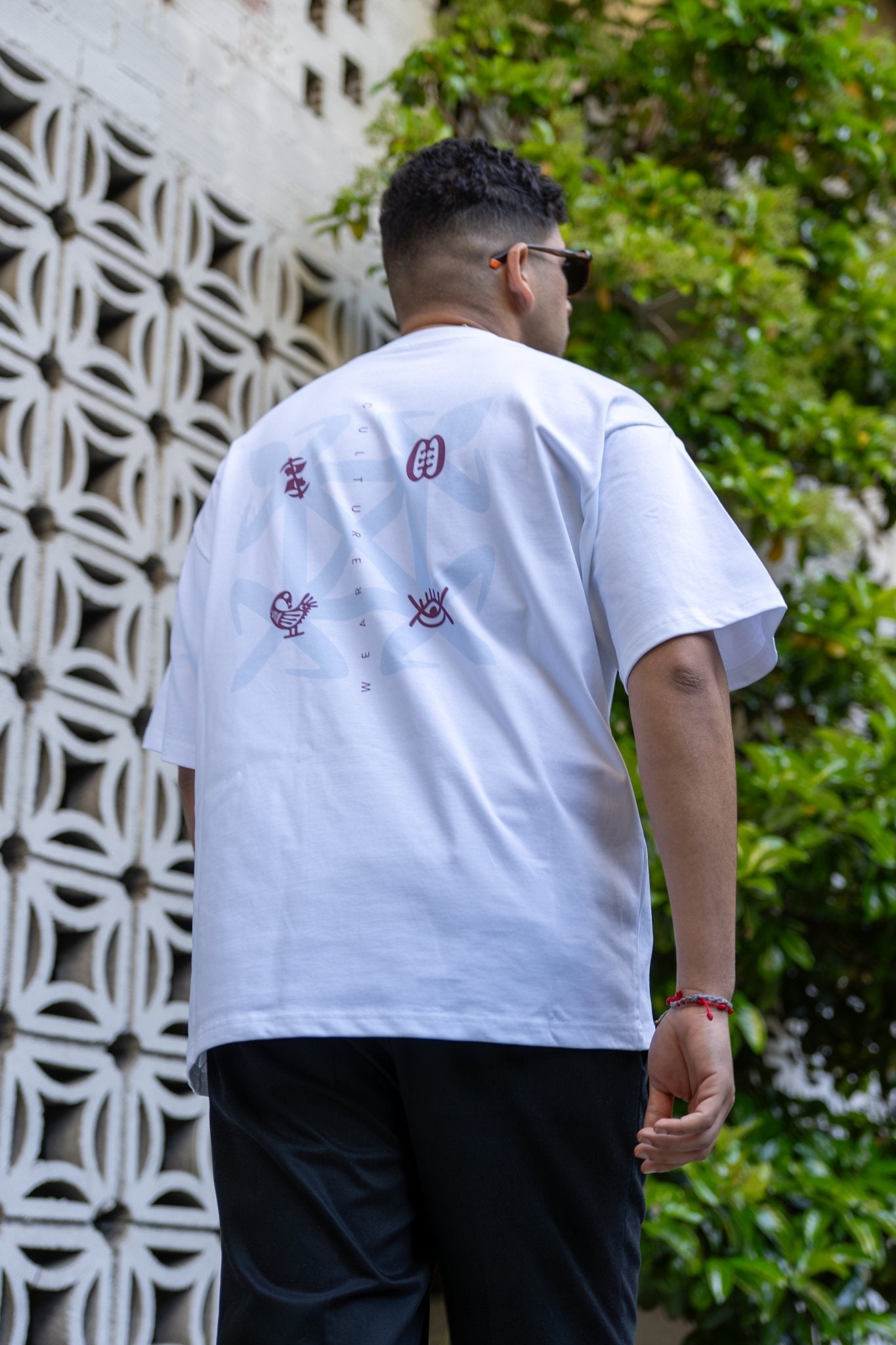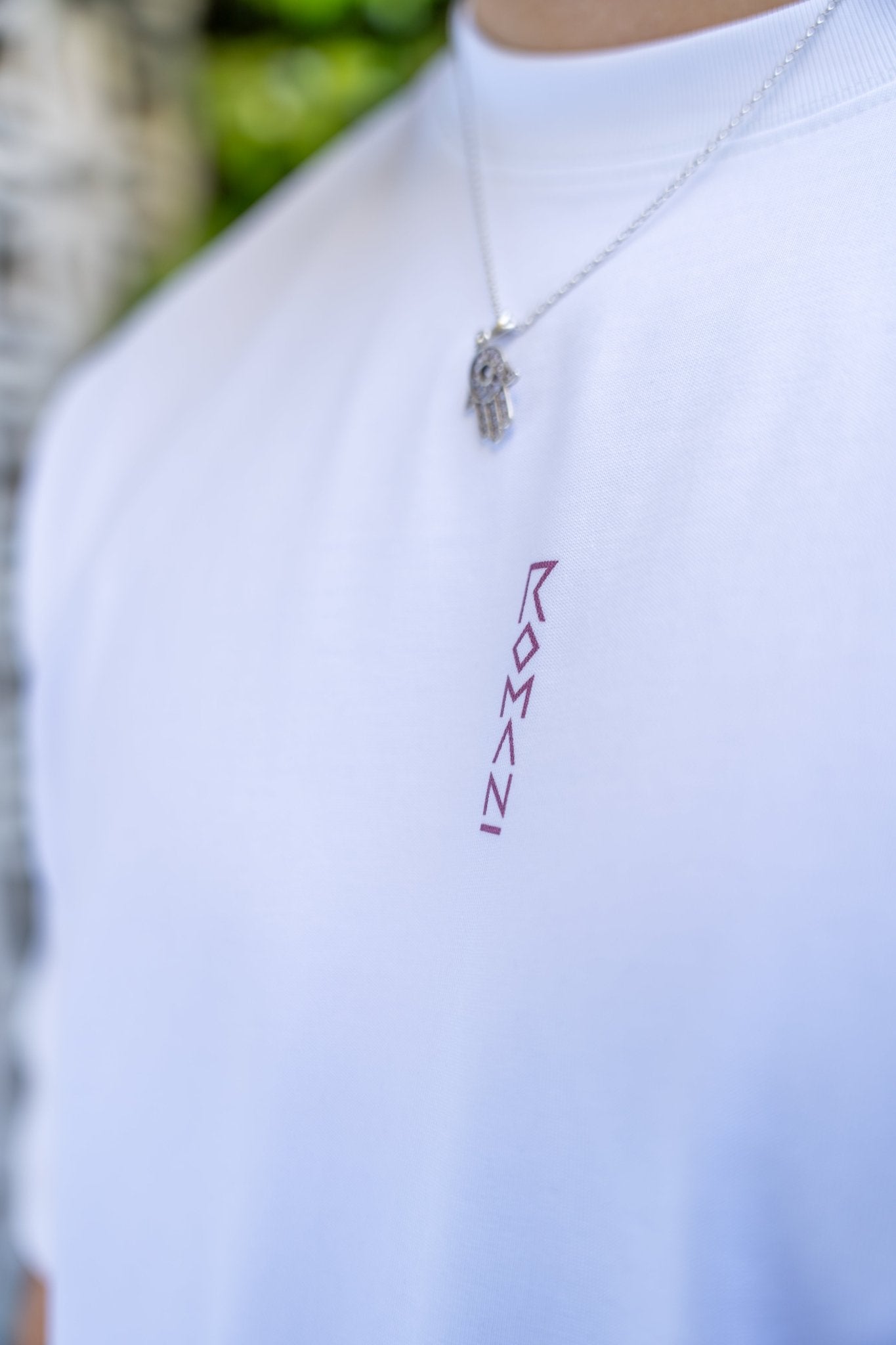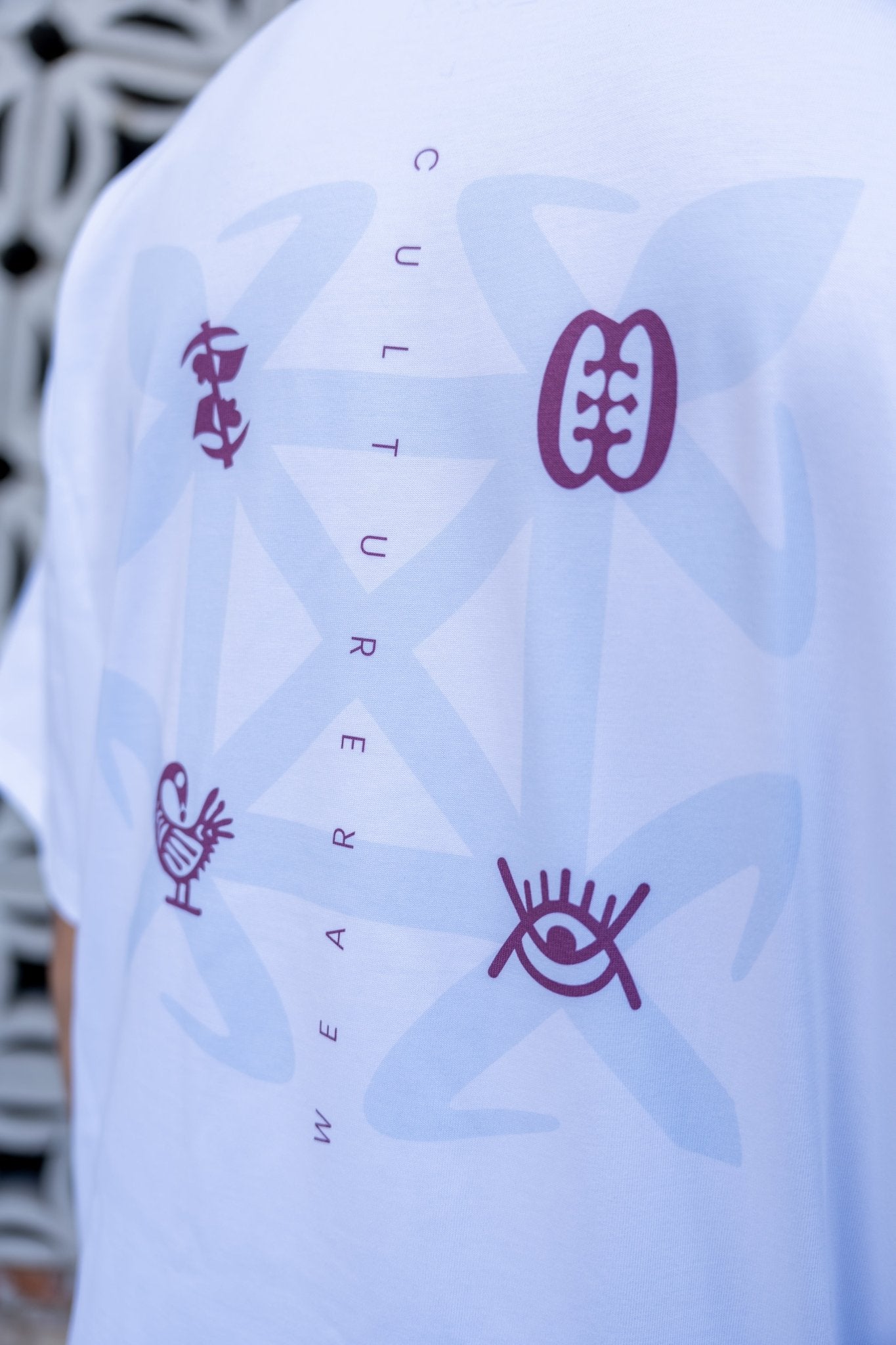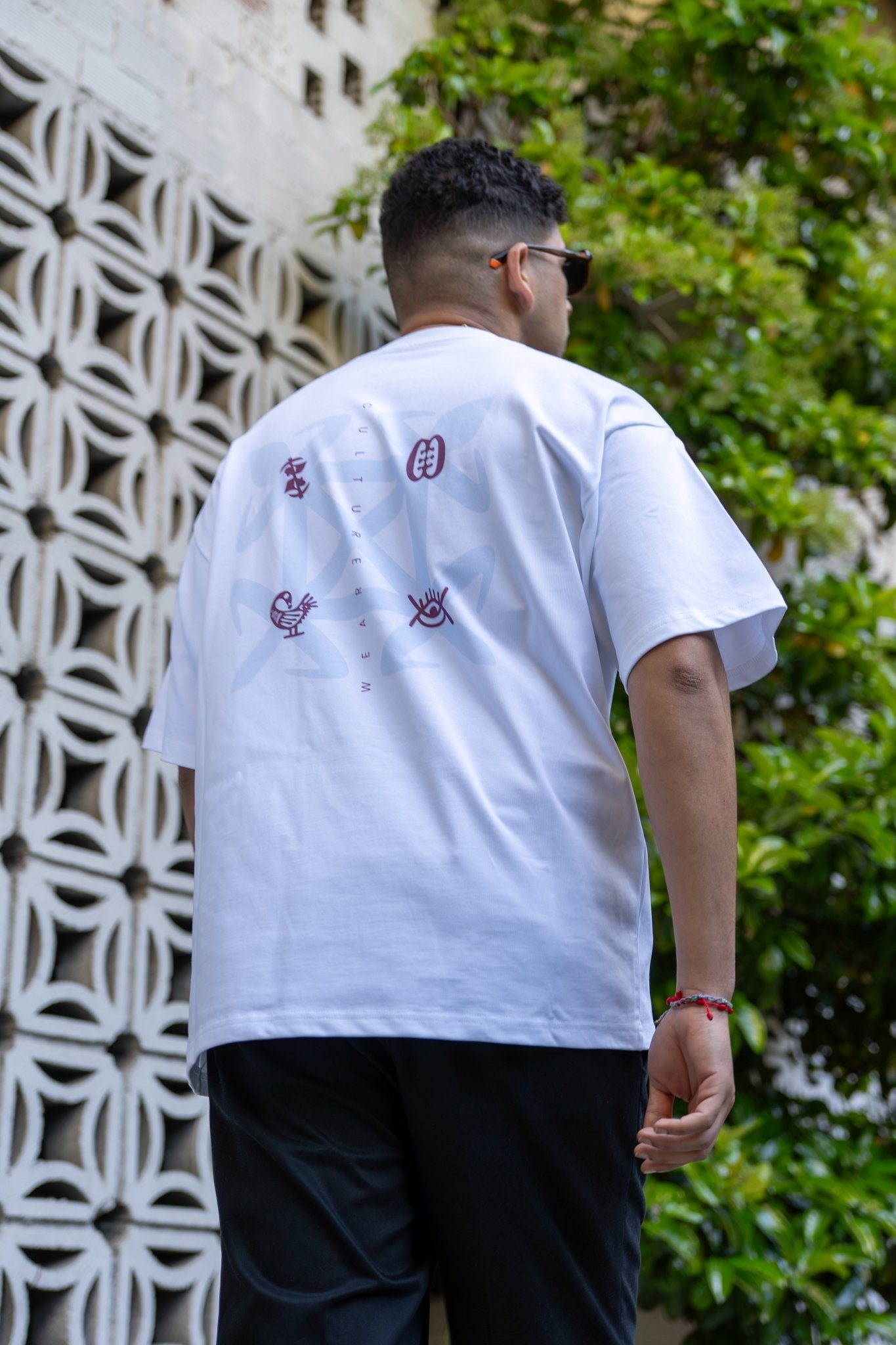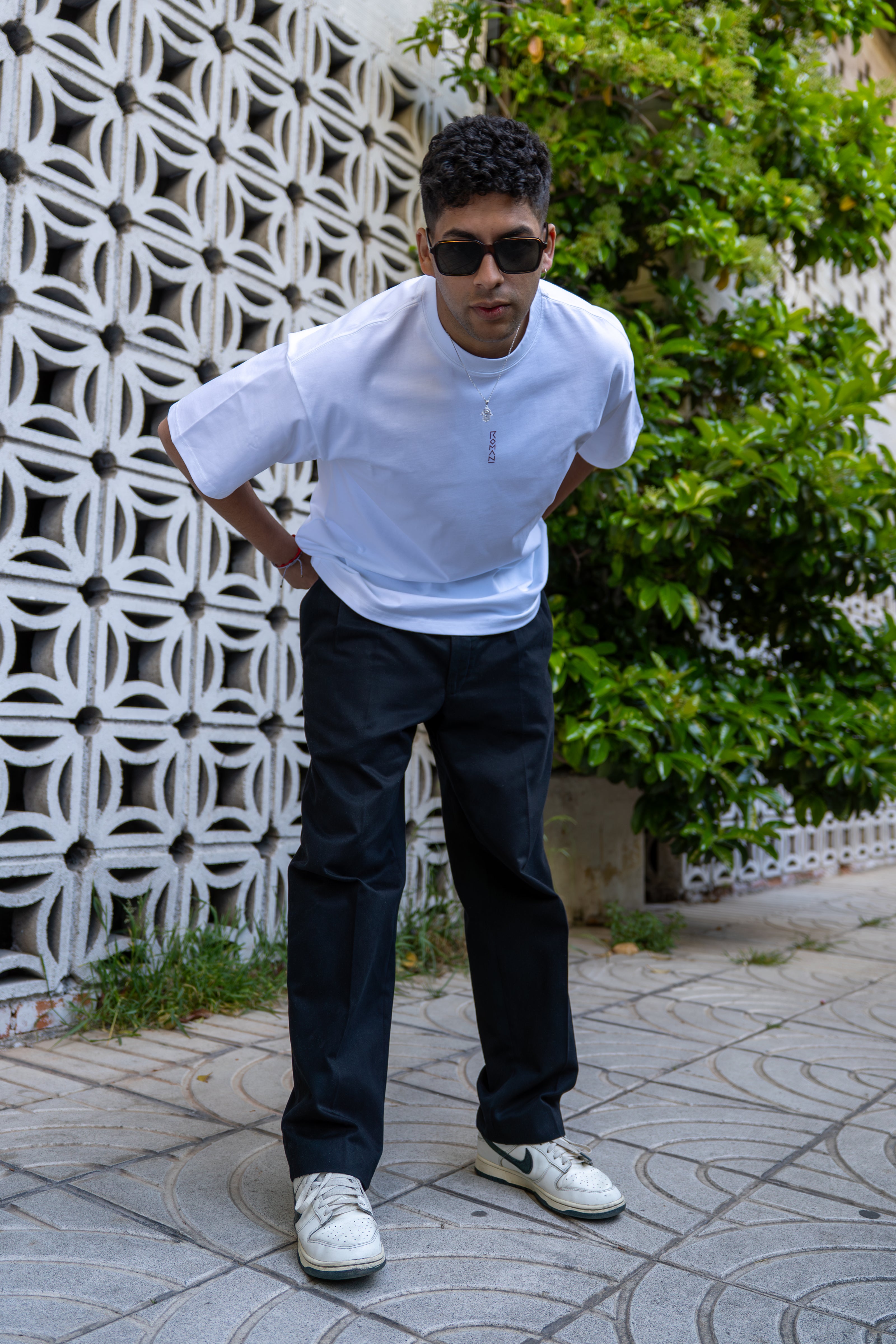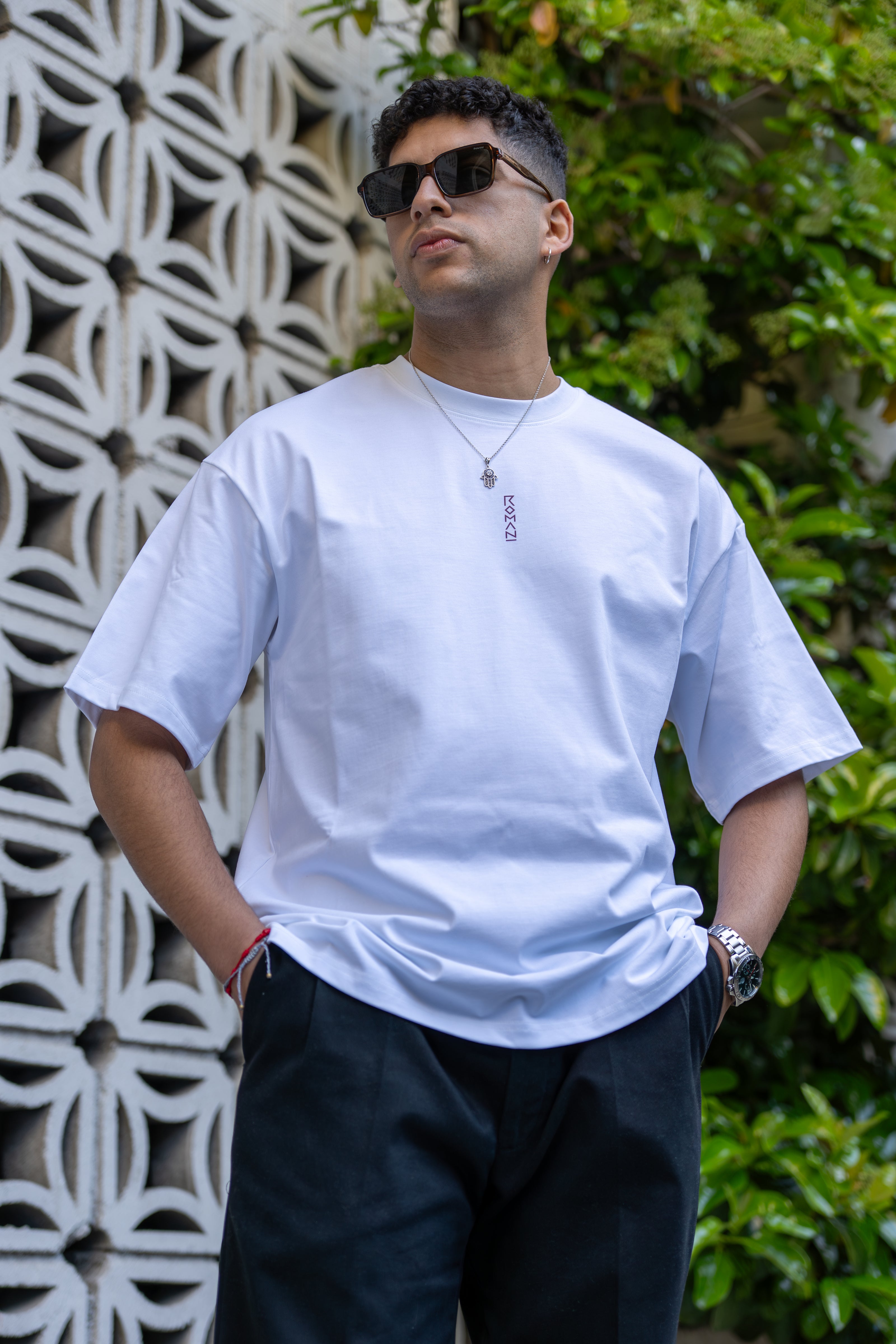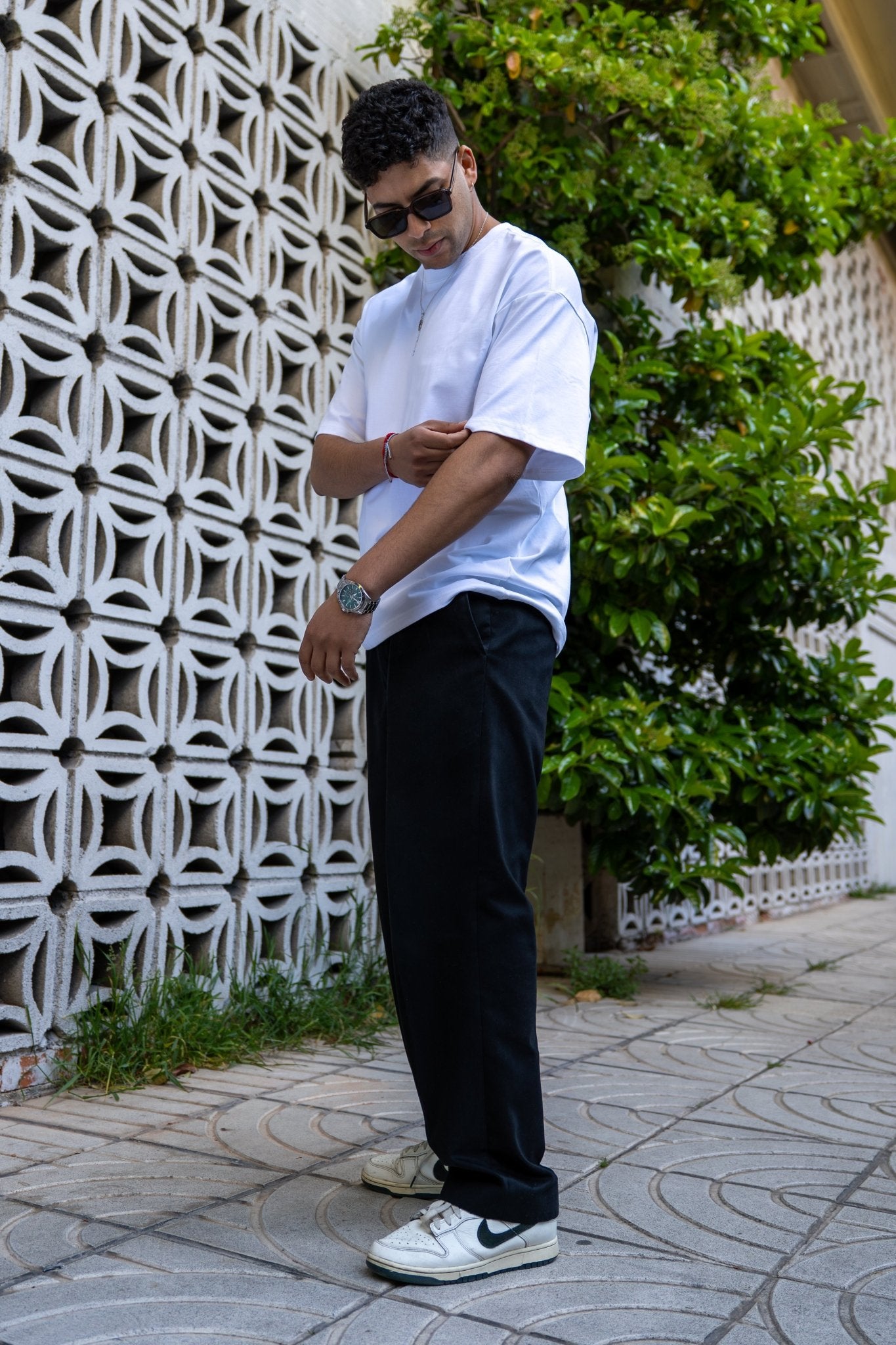
The Story of
Adinkra
Long ago, in the golden-dusted lands of Gyaman, a king named Nana Kwadwo Adinkra dared to defy the mighty Ashanti. When his kingdom fell, his people wove their grief into cloth—stamping it with symbols of loss, wisdom, and resilience. They called it Adinkra, meaning "farewell."
But the Ashanti, moved by the depth of these symbols, adopted them. What began as a mourning ritual grew into a language of the soul—etched into fabrics, carved into stools, whispered in proverbs. Today, Adinkra is more than a relic of war; it’s a living heartbeat. Students wear it as a badge of heritage, elders teach through its patterns, and artists reimagine it for new generations. It is a bridge between ancestors and the unborn.
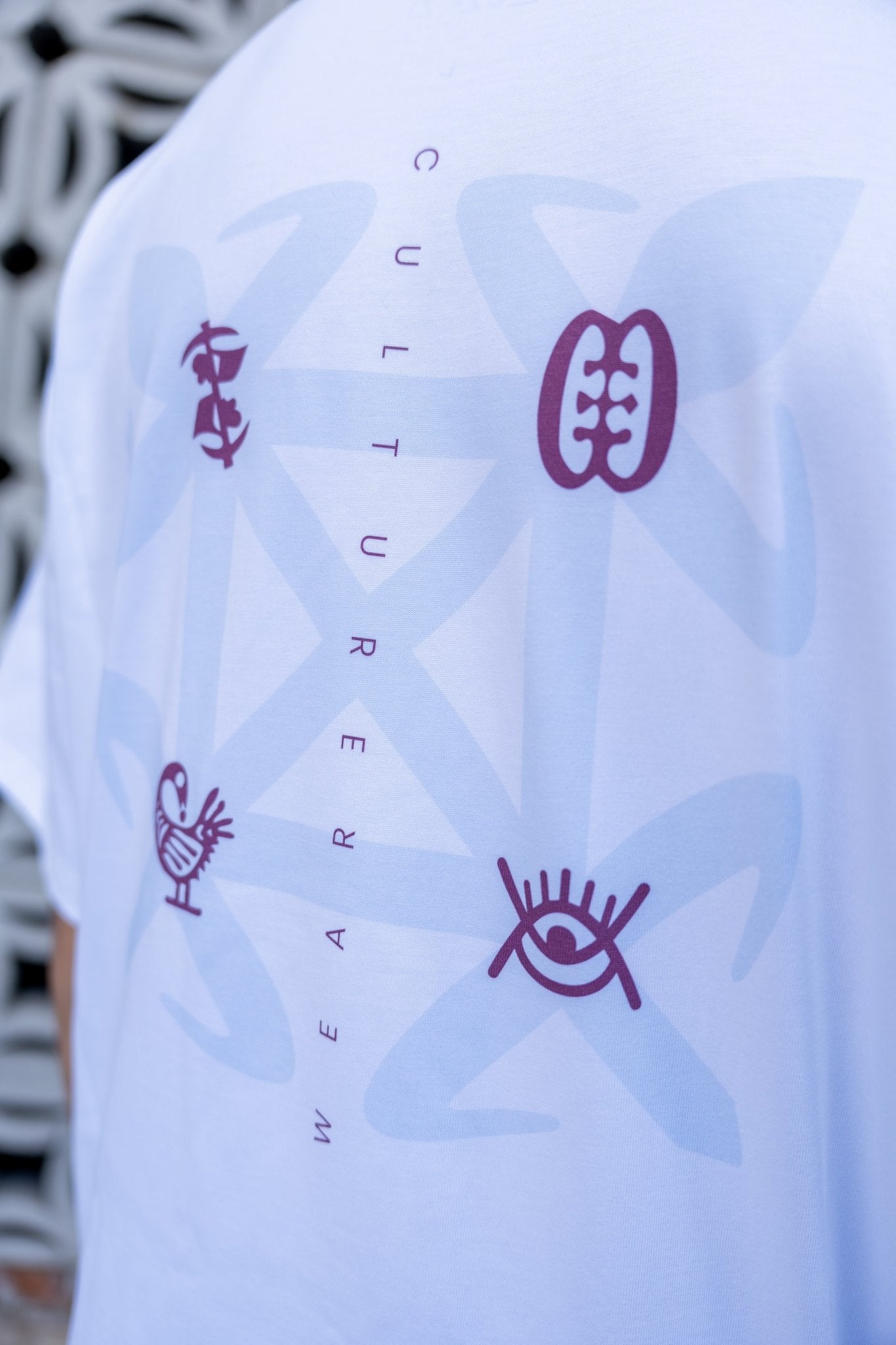
The Adinkra piece brings together five ancient symbols, each chosen for the way it speaks across time — from a West African past to a global present.
It begins with Sankofa, the bird that turns back to retrieve the egg from its back. In this gesture lies a truth we hold close at Romani: that looking back is not the opposite of moving forward — it’s the foundation of it. We believe in honoring where stories begin, especially the ones that history tried to forget.
Then comes Funtumfunefu Denkyemfunefu — two crocodiles, one belly. Different in form, but bound by a shared need. This is the paradox of community: difference does not divide us — unless we let it. For us, this symbol reflects a global truth: we are distinct, but deeply connected.
Okuafo Pa, the good farmer, appears next. A symbol of care and consistency, it mirrors our own process: we dig deep, we plant intentionally, and we trust that meaning will grow over time — through craft, through dialogue, through design that doesn’t rush to speak, but listens.
Abode Santann reminds us that everything has two sides — body and spirit, visible and invisible, past and present. We design in that tension. We bring cultural memory into modern form, knowing that both matter. Form and soul. Fiber and meaning.
And finally, Ese ne Tekrema — the teeth and the tongue. They live in the same mouth, and sometimes clash. But they always make peace. This is the work of every culture, every relationship, every generation: not perfection, but grace. The kind that keeps us moving forward — together.
Cultural Piece
Adinkra t-shirt
